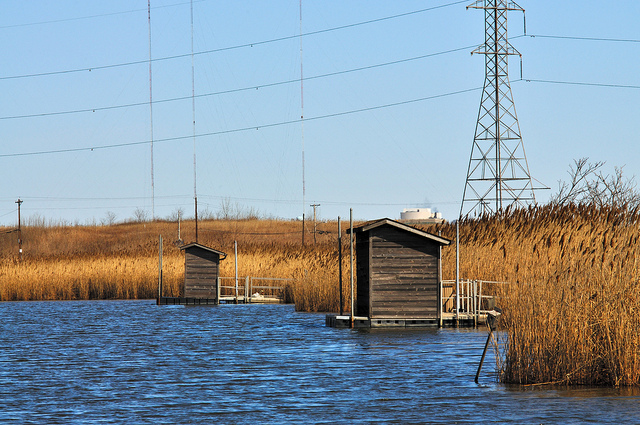

Natural disasters take on perilous forms, and we must take due measures to protect ourselves. Recently, we have seen hurricanes, cyclones and tornadoes that have ripped cities apart. If you live in an area prone to seasonal wind storms, here’s what you should know to protect yourself, your loved ones and neighbors.
Contents
Havoc-wreaking Nature’s fury
Let’s understand a bit about hurricanes and why they become so dangerous.
How are hurricanes created
Warm air rises from the oceans and creates thunderstorms. The upper-level wind system combines with the surface level winds and creates a depression. The force of average hurricanes released is comparable with millions of atomic bombs.
Hurricanes are any tropical or subtropical storm with strong winds that move at blazing speeds of 74 mph and above.
When winds reach greater speeds, hurricanes are born and named, and their patterns and systems recorded for comparisons with previous years, and to take precautions for the future. Each hurricane receives a scale or category which defines the devastation that it could potentially induce.
Smaller thunderstorms could collectively result in a hurricane. Hence, the development of a hurricane may be erratic and accurate predictions difficult. Hurricanes usually build-up in the sea and may dissipate before reaching land.
The hurricane season
The hurricane season begins in summer – roughly in June, July and August.
If you live in areas that are predisposed to hurricanes and strong weather conditions, take these tips to learn how to prepare yourself beforehand, and, most importantly, how to survive the storm.
Readiness and Preparedness
Your greatest survival challenge and solution is preparedness.
The ESF8 Portal, established after Hurricane Gustav in 2008, offers three most important points for survival in natural disasters – prepare, prepare, prepare.
Agencies like the Federal Emergency Management Agency (FEMA) and National Oceanic and Atmospheric Administration (NOAA) recommend you to prepare well before the start of hurricane season. This season begins in June, therefore, be prepared!
1. Keep up with the news
People living on the coasts are most likely to get the strongest hit in the event of a tropical storm. Stay updated with the local weather channel and follow the instructions.
2. Make a plan for your family
This plan will prepare your family in times of emergencies. The plan you make should be according to the safety guidelines given by the local authorities, which includes a comprehensive disaster plan and disaster survival kit to use in times of emergencies.
A disaster plan will include measures you will take both inside and outside your home. Your disaster plan will be dependent on your decision to stay or leave for the shelter or safer places. It will, nevertheless, include the following.
- Emergency evacuation route maps and rendezvous points
- Identity documents and other important credentials in waterproof packing
- Communication methods with family and friends
- Important contact numbers and information
- Common contact person in friends or family in case family is separated
- Needs in the household such as medical equipment, needs of the elderly and infants
- Checklist for carrying out drills regularly to keep steps in mind
Ensuring survival
3. Disaster survival kit
A disaster survival kit will include items for you to take along with you to shelter camps. Or if you are at home, they will help you weather the storm.
You will need to identify the needs and requirements of the elderly and the infants, and even pets, to take due measures for their survival for three to four days.
The basic items in your disaster survival kit are listed here. Get a detailed list here as recommended by FEMA.
- Water – essentially one gallon per person per day – for drinking as well as sanitation purposes (You may need to store equal volumes of water for pets, and more if you are expecting a baby)
- Food items – non-perishable for three days
- First aid kit, personal hygiene articles and prescribed medicines as required
- Battery operated radio
- Battery operated flashlight
- Supply of batteries
- Local maps and important contact numbers
- Mobile phone chargers and batteries
- Warm, protective clothing
Make sure your kit is ready, and the perishable items replaced timely.
Keep following the directions of the local emergency authorities to update your list of requirements.
Do not be tempted to pack extra, especially if you are relocating to safer areas.
If you are staying at your home during the storm, make sure the things you need are in a cool, dry place with ease of access for you and your family.
You may also need to keep supplies at your work, home and in your car since an emergency could be declared at any time.
4. Protect your home
While evacuation may be the easier option, in the non-availability of this option, you may need to prepare well in advance to protect your property and assets from the potential threat.
There are options available to fortify your home and reinforce the rooftops, the windows with storm shutters, sealed doors with sandbags and basement with materials that help protect your home from the strong wind speeds.
Bring outdoor furniture and items inside and store them properly.
Cut off any weakened branches of trees and remove potted plants.
Turn off electrical mains well before the storm hits to protect from electrocution in case water fills in.
Invest in insurance to rebuild when the storm subsides. Take photos of the damages to be able to report to the insurance companies for the necessary paperwork.
Weathering the storm
5. During a hurricane
Watch out for news updates and subscribe to alerts on your mobile and radio devices from NOAA or the local emergency authorities.
Relocation Headstart – 48 hours or 2 days
The most sensible and advisable option is to evacuate 48 hours before the hurricane hits the area, and head to locations that are safer, dryer, and not to be affected by the storm.
Strictly follow all instructions given by the local emergency management authorities.
With as many protective measures you can take to ensure your home to take the brunt of the storm, head out with your family to safer zones at least 36 hours before the storm hits.
Keep your vehicle’s gas tank full and take a headstart, much before the threat is imminent, and to find clearer routes for yourself and many others relocating like you.
Moving to local shelter – 3 hours
If you have decided to stay, look for a reinforced shelter to wait out the storm.
Keep your mobile device and radio handy to follow the news and alerts, together with your emergency survival kit.
The shelter could also be a ‘safe room’ installed in your home, or you must move to shelters provided by the local emergency management authorities.
Stay indoors and do not move even if you think the storm has come to a standstill. The calm and the silence are often deceptive and called the ‘eye of the storm’. You can be hit by the storm again. Keep away from windows and doors.
Do not take shelter in basements or concealed rooms.
If you live in a tall building, it is important you relocate to the lower floors.
Treat injuries
Please be aware that like you, the entire area is facing the emergency. That includes emergency services like 911.
Make use of your first aid kit and learn to give first aid to manage injuries, as much as possible, till help arrives.
Recovery and rehabilitation
Listen to news updates and emerge from shelters only when the threat has passed, usually 30 minutes to 1 hour after the storm subsides.
Do not go near flooded areas lest downed or exposed wires are unnoticed under water.
Wear protective clothing and footwear to protect your feet from injuries.
Hope
While the weather conditions may change suddenly to wreak disastrous effects, technology is growing to play a strong role in mitigating the effects of hurricanes and providing large-scale solutions for incident and resource management and special medical needs shelters.
Rebuild
Natural disaster survivors must gather resilience and hope to rebuild their homes and lives after the event.
When you return to your home or emerge from your shelters, clean and disinfect everything that was covered by water.
Pump out water from basements and other low-lying areas where water pooled.
Make sure the water for drinking and sanitation is fit for use.
Create a punch list to record the losses due to the storm to report to insurance companies.
To reiterate the earlier premise – be prepared. In the wake of the storm – stay calm and responsive. In safer times – prepare adequately, prepare well.



